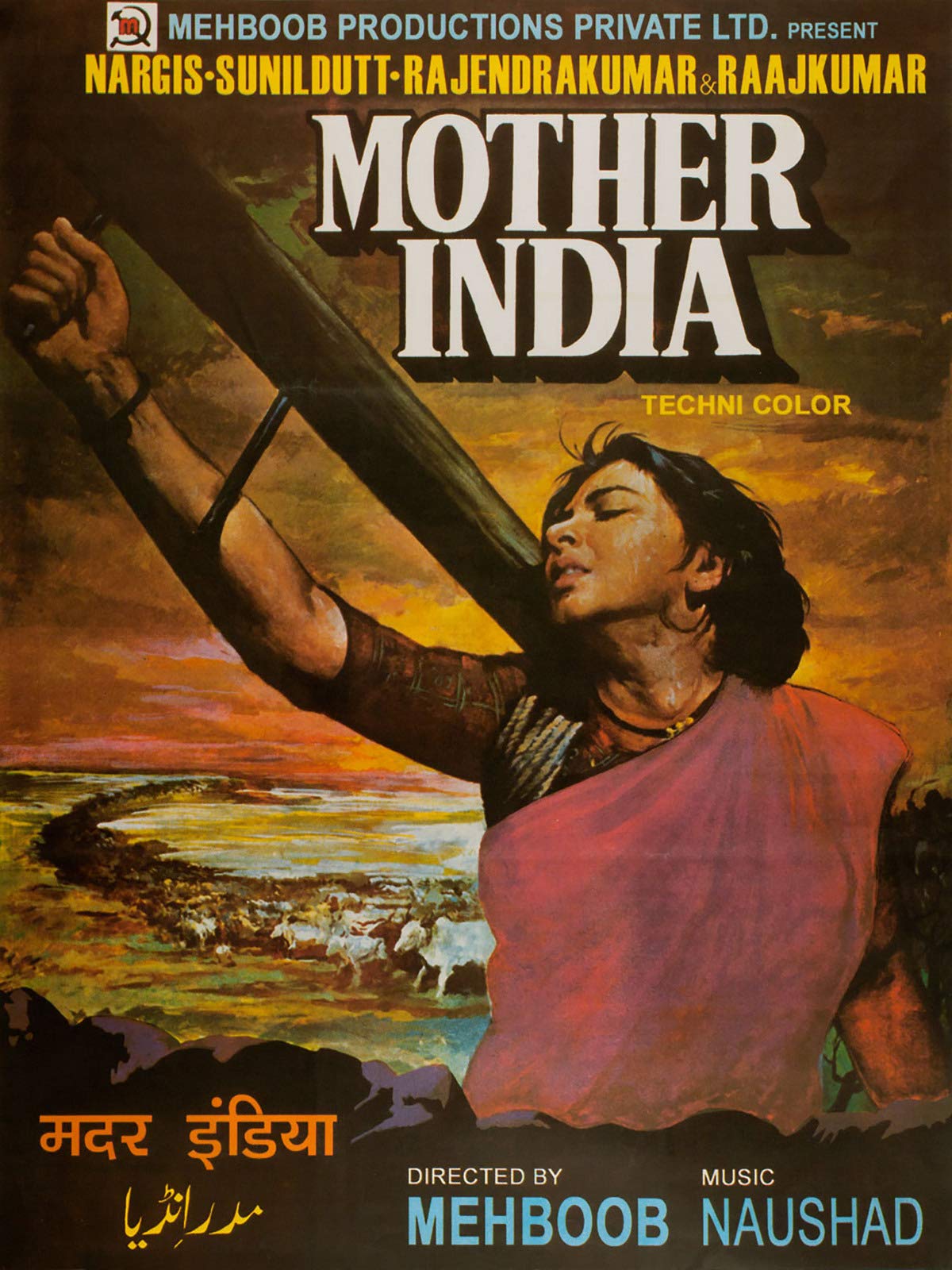


Besides the entertainment that the movies provide , they are also the mirror image of society. They bring to the fore the various challenges that the society is facing. In that sense, Hindi cinema by and large has played an excellent role, despite all the technological handicaps that they might have faced in its early years.
It played a key role in shaping the India’s national identity in the early years after independence as the films conveyed a sense of Indian nationalism to urban and rural citizens alike ; Leader, Shaheed Bhagat Singh, Haqeeqat , Anand math, Upkar,Purab aur Pashchim, etc. even the independence movement deeply influenced Bombay film directors, screen-play writers, and lyricists, who saw their films in the context of social reform and the problems of the common people
According to economist and Bollywood biographer MEGHNAD DESAI, "Cinema actually has been the most vibrant medium for telling India its own story, the story of its struggle for independence, its constant struggle to achieve national integration and to emerge as a global presence".
Pakistan's Loss - India's Gains.
Before the Partition, the Bombay film industry was closely linked to the Lahore Film industry which is now known as Lollywood. As both produced films in Hindustani which is the lingua franca of Northern and Central India. Another centre of Hindustani-language film production was the Bengal film industry now called as Kolwood which also produced Hindustani-language films and local Bengali language films..
Many actors, filmmakers and musicians from the Lahore industry migrated to the Bombay industry during the 1940s, and many muslim writers , lyricists preferred to stay put in India , instead of going to Pakistan. Around the same time, filmmakers and actors from the Calcutta film industry began migrating to Bombay
So, in other words , Pakistan’s loss was India’s gain as far as cinema was concerned ; Actors, filmmakers, musicians , lyricists , directors - Abrar Alvi, Khawaja Ahmad Abbas, Mehboob Khan, Kamal Amrohi, Kaifi Azmi, Naushad, Sahir Ludhianvi , Suraiya, Nargis, Mumtaz, Waheeda Rehman, Madhubala , KL Saigal, Prithviraj Kapoor, Dilip kumar (Yusuf Khan), Devanand as well as playback singers Mohd Rafi, Noorjahan, Shamshad Begum, Talat Mehmood and many more preferred to stay put in India.
All of them consolidated the Bombay film industry's position as the pre-eminent center for film production in India. For instance - Legendary movies like Awara , Mother India , Shree 420 were written/ directed by muslims who preferred to stay in India and some of the most melodious songs were written by muslim lyricists and sung by muslim singers.
As a result, Bombay became the center of Hindustani-language film production. Gradually, Hindi films became a significant form of soft power for India, increasing its influence and changing overseas perceptions of India. Some one rightly said , "Bollywood cinema is one of the strongest global cultural ambassadors of a new India. Its role in expanding India's global influence is comparable to Hollywood's similar role with American influence.
None can deny the influence and popularity of Hindi cinema in Gulf, Afghanistan, Pakistan, Srilanka, USSR and even China and now the diverse diaspora of India in west.
Because it played that role of National identity, it was unofficially taken as the main stream cinema of India and the rest were called as Regional cinema ; Tamil, Telugu, Bengali, Punjabi, Malyalam.
Regional Cinema Industry Takes over.
However, as years passed the Regional movies over came those initial handicaps and are now producing some finest movies, music, finest actors, directors and singers and music directors. .
One can now state with some confidence that the South Indian movies and actors have finally caught up with the Hindi cinema or may be the standard of Hindi cinema over a period of time has deteriorated.
Anyways, One can now with surety say that Hindi cinema is no more the national cinema ; officially or unofficially.
Although, there can be many reasons that can be attributed to that and we can keep discussing this till cows come home.
Few critics blame the movies that the Hindi film industry has produced in recent years lack both skill and substance, especially in comparison to South Indian films. Most of the movies are a poorly researched and exaggerated work that had countless loopholes.
Sometimes this is done deliberately with an aim to promote a certain ideology or convey a message of machoism or at times due to pressure that it may hurt the sentiments of some ethnic group or religious group.
The outcome is for all to see, the top most honors in the 68th National film awards ceremony were won by films from four South Indian states ; Tamil, Telugu, Kannada and Malayalam cinema , and this is not an exception, rather its been a trend of last 5-6 years or may be more. This shows just how deep and how solid the shift towards their films is now.
Perhaps, that might be the reason of frustration for Ajay Devgan also who recently got into a spat with South Indian film actors.
This lack of quality is even visible in Hindi serials also which are often not properly researched work, including Dr Ambedkar and Devi Ahilyabai. The Punjabis had already shifted to Pakistani TV plays, many years ago.
Communal Audience.
So, now that the Hindi audience has become communal and has started targeting the Muslim actors and also Hindu actors who support secularism , it will surely cause more harm to the Hindi cinema than do any good.
The creativity which was the hallmark of Hindi cinema is now being sacrificed at the altar of Religious, Cultural and Ethnic sentiments, which should as a matter of fact be the USP of Regional cinema, rather than the main stream cinema. Because a regional cinema will always have a limited audience belonging to a particular group ; language or ethnic.
It would be a gross under utilization of talent, capabilities and potential of Hindi cinema if it is transformed into a regional cinema that has to live to the challenges and demands of communal audience of Hindi speaking belt.
If at all, it has to play that erstwhile role of a soft power and be the torch bearer of National integrity, it has to find its bearings; may be, become more creative and produce better movies based on adequate research work.
As regards the communal audience ; it is better to watch a movie and then criticize it. Do not criticize it without seeing it. For instance ; Amir Khan in Lal Singh Chaddha is not portrayed as an army officer(Many criticized the movie on this issue) but is actually a Lance Naik and does not have a low IQ and he did a fantastic work what a Lance Naik is supposed to do.
Do not destroy the Goose that has been giving us the Golden eggs.
Now, the point to ponder ; Is there any harm if Hindi cinema loses its status of National main stream cinema and the Regional cinema takes over that status ?
Can the recent spat over the language between the South Indian and North Indian actors and the politicians provide us any clue?
If Bollywood has to regain its lost status, both have to mend their ways ; the movie makers as well as the communal audience.
